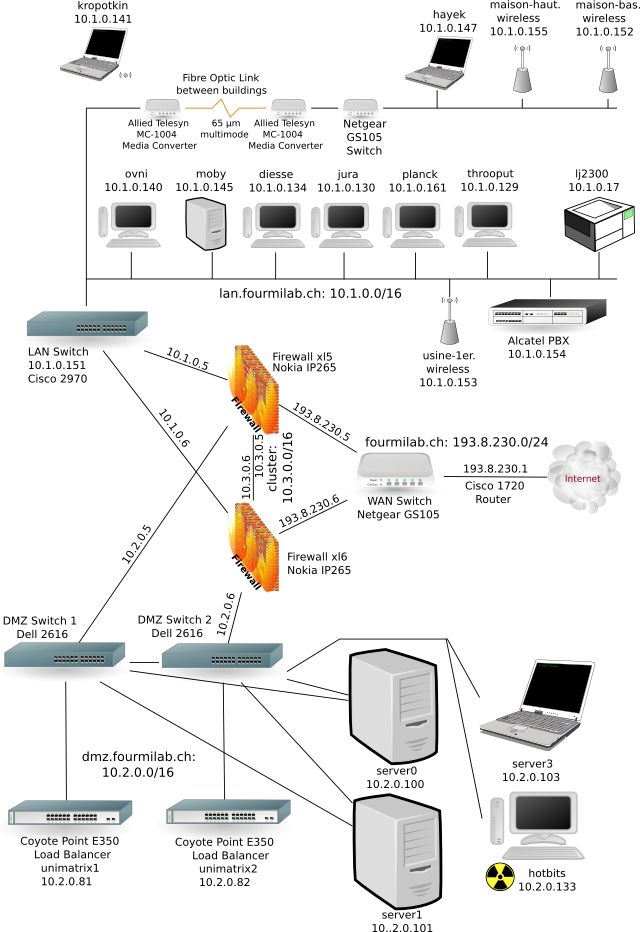1 or a 0 = bit
8 bits = 1 byte
Each letter, symbol, value = 1 byte
Router --> Identify each node - calculations about where to send a packet of data
Switch --> makes connections from nodes to the Server or Router
Data in transfer is broken into packets.
Example: a <– 8 bits email <- 100’s of bits
BUT: In data transfer we deal in bits per second. A packet is a group of bits that will be transferred across a network to be collected and put back together on the receiving device.
Types of Networks:
Client/Server – Server is the device that manages the data while clients receive data.
Peer/Peer – All devices share data equally.
Network Architecture
Cables
Twisted Pair: very cheap to produce, but has a lower bandwidth, not very hard to tap into.
Coaxial Cable: much higher bandwidth, high speed, more expensive, hard to tap into.
Fiber Optic Cable: extremely high speed and bandwidth, very expensive, very hard to tap into.
Transmission
Wireless: very easy to tap into, covers a large proximity, easy to setup and install.
Bluetooth: covers a smaller radius, lower bandwidth, very useful, cheap.
NFC: extremely easy to tap into, not as cheap, very useful, requires direct contact.

No comments:
Post a Comment